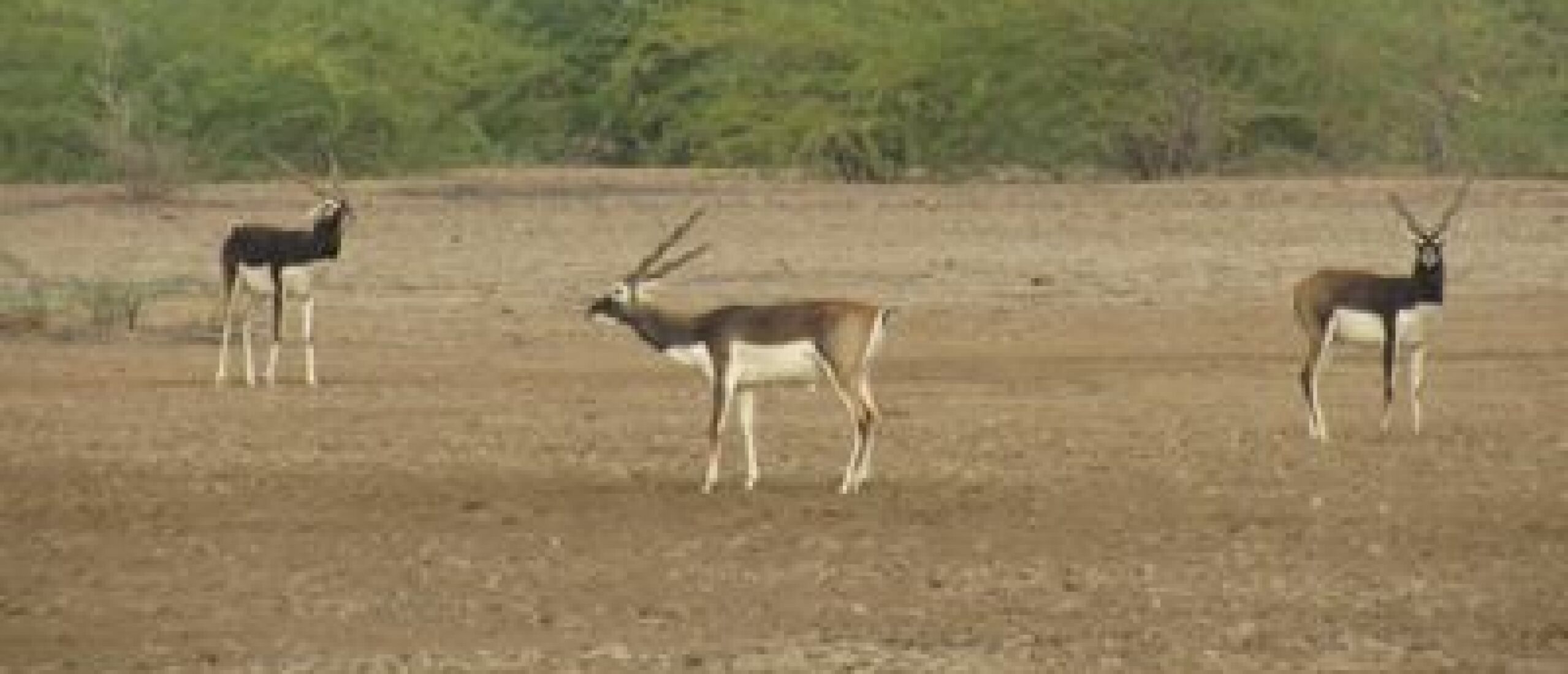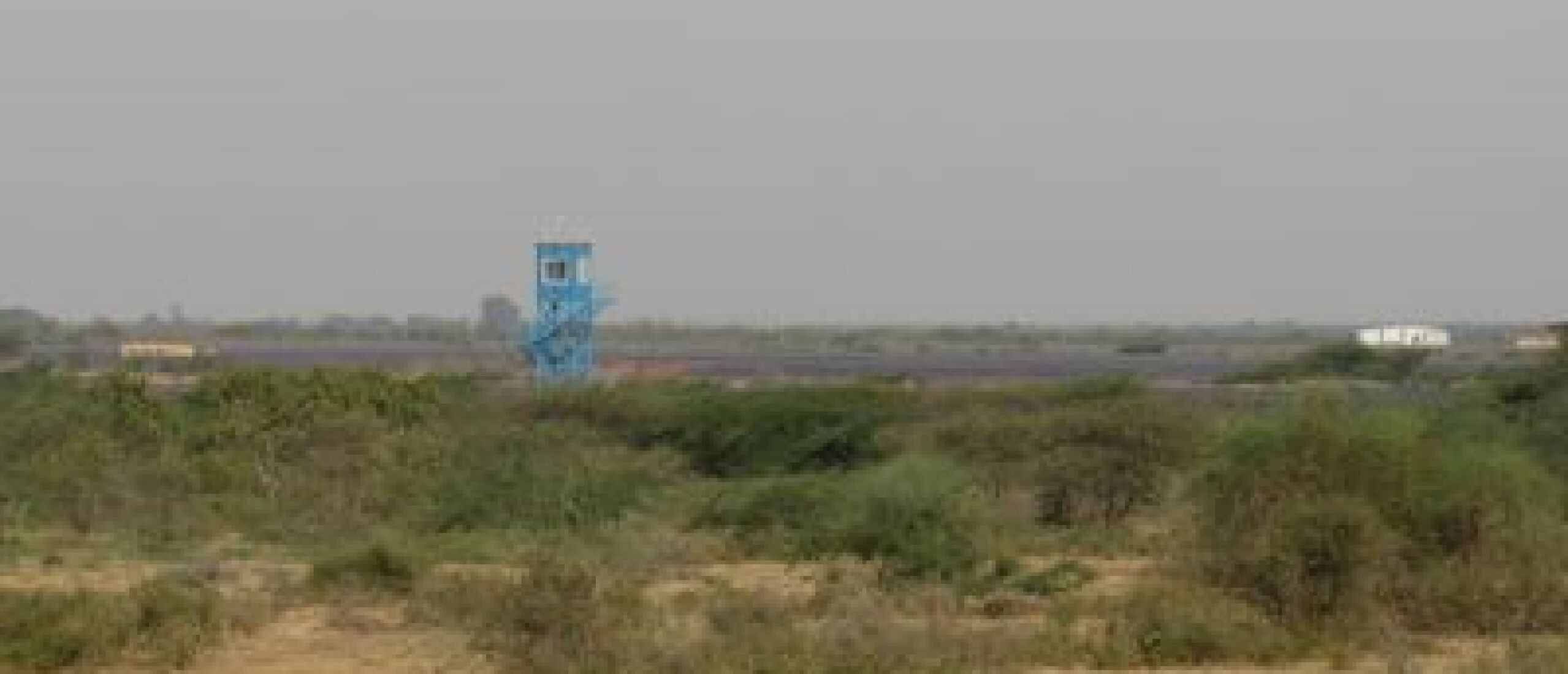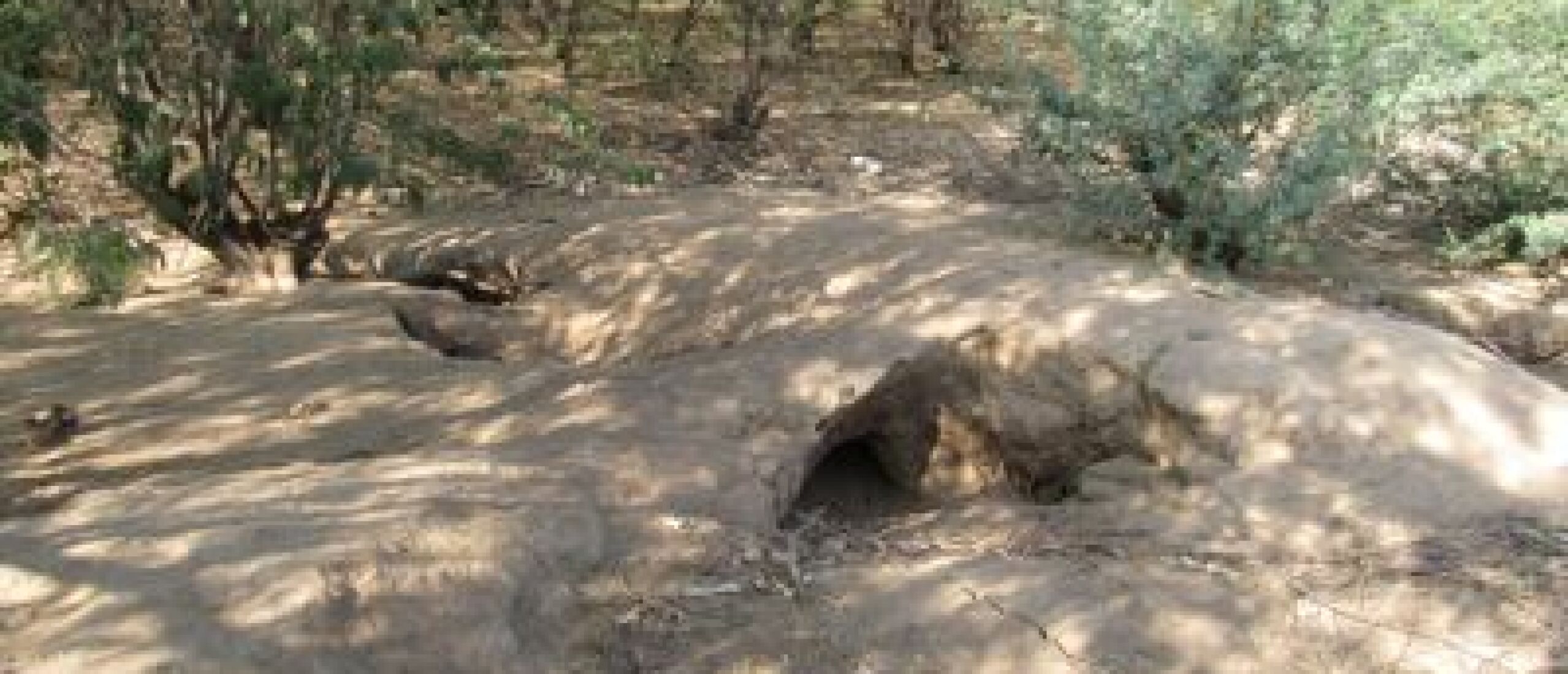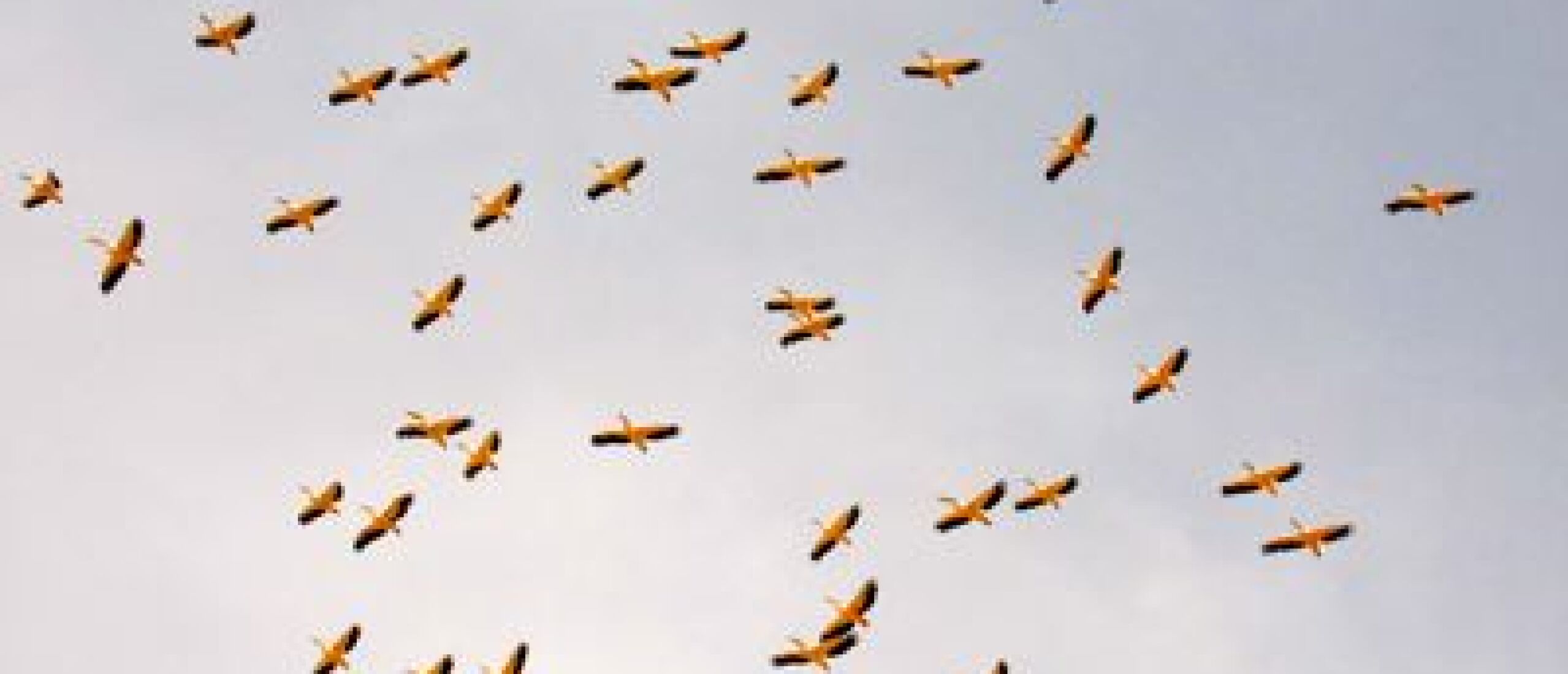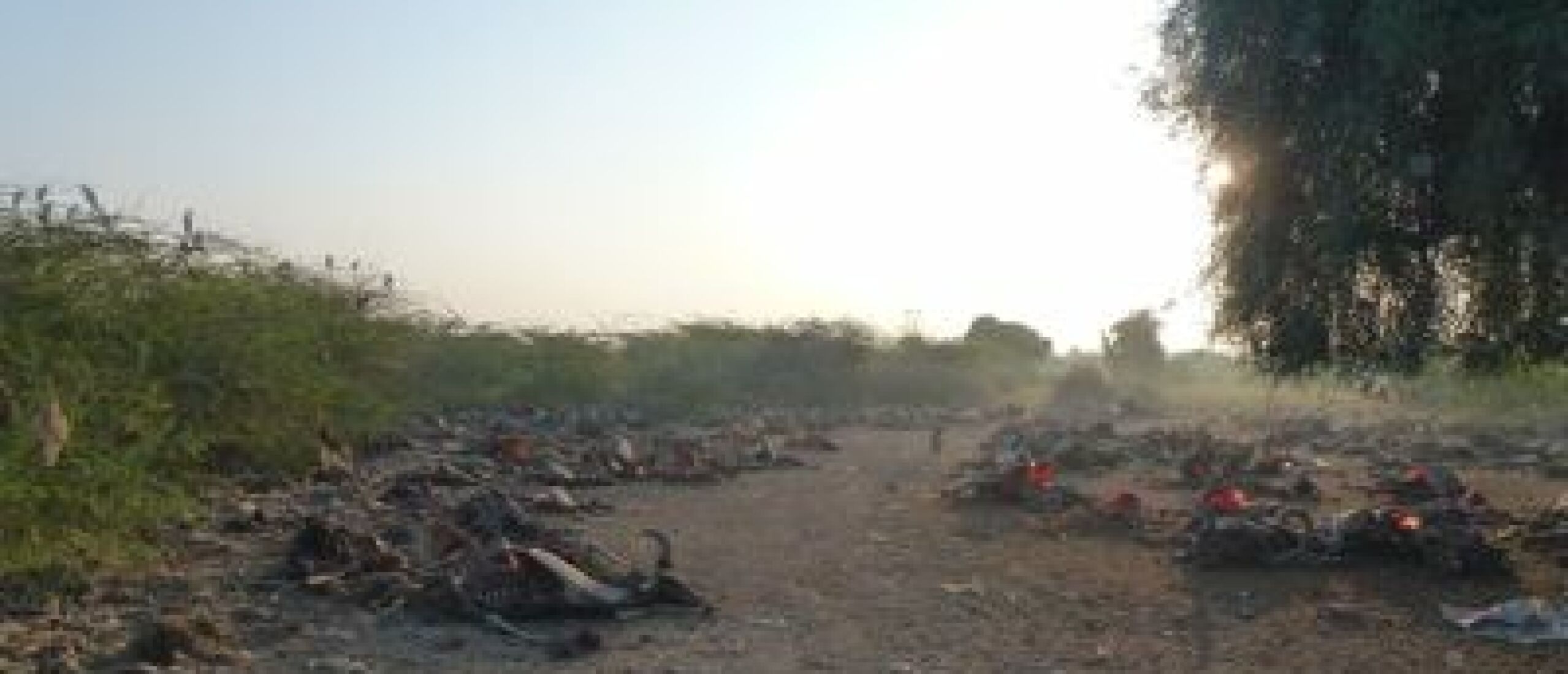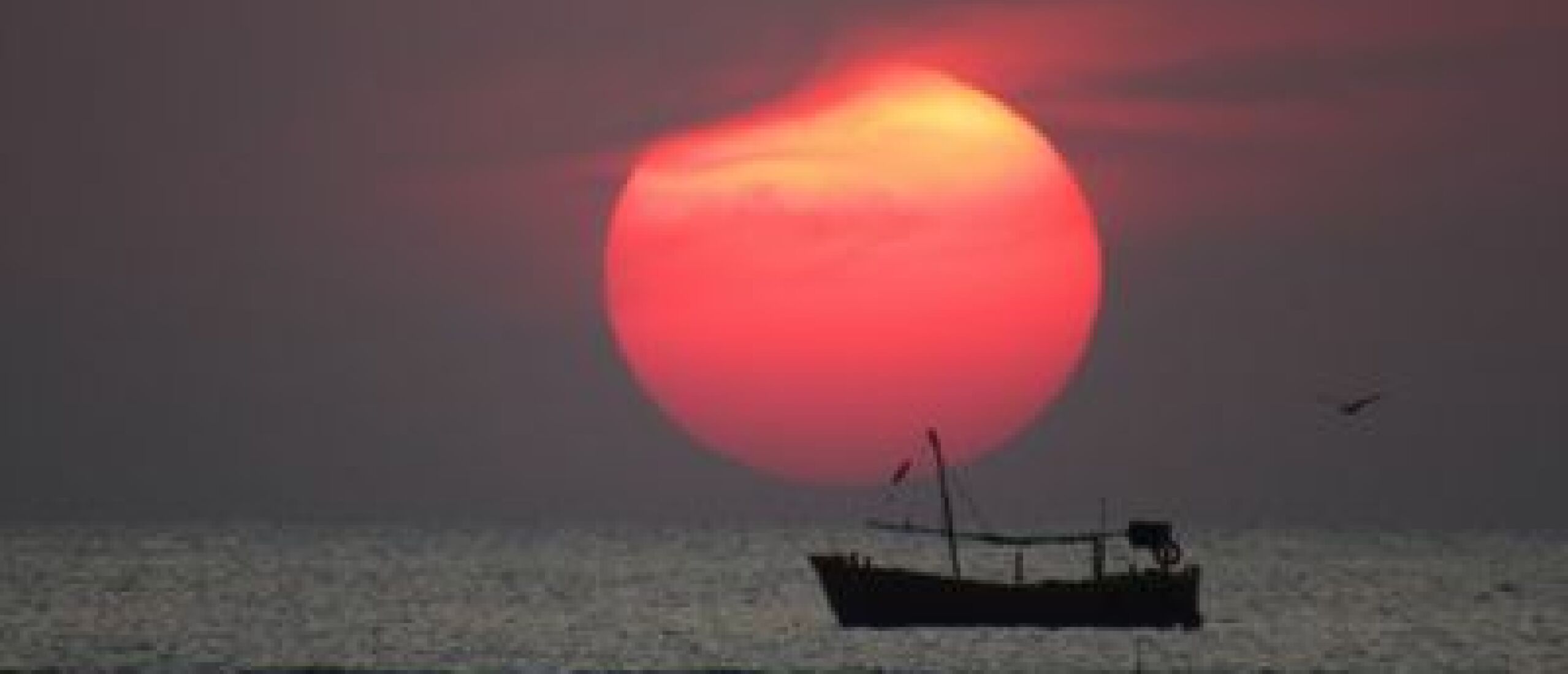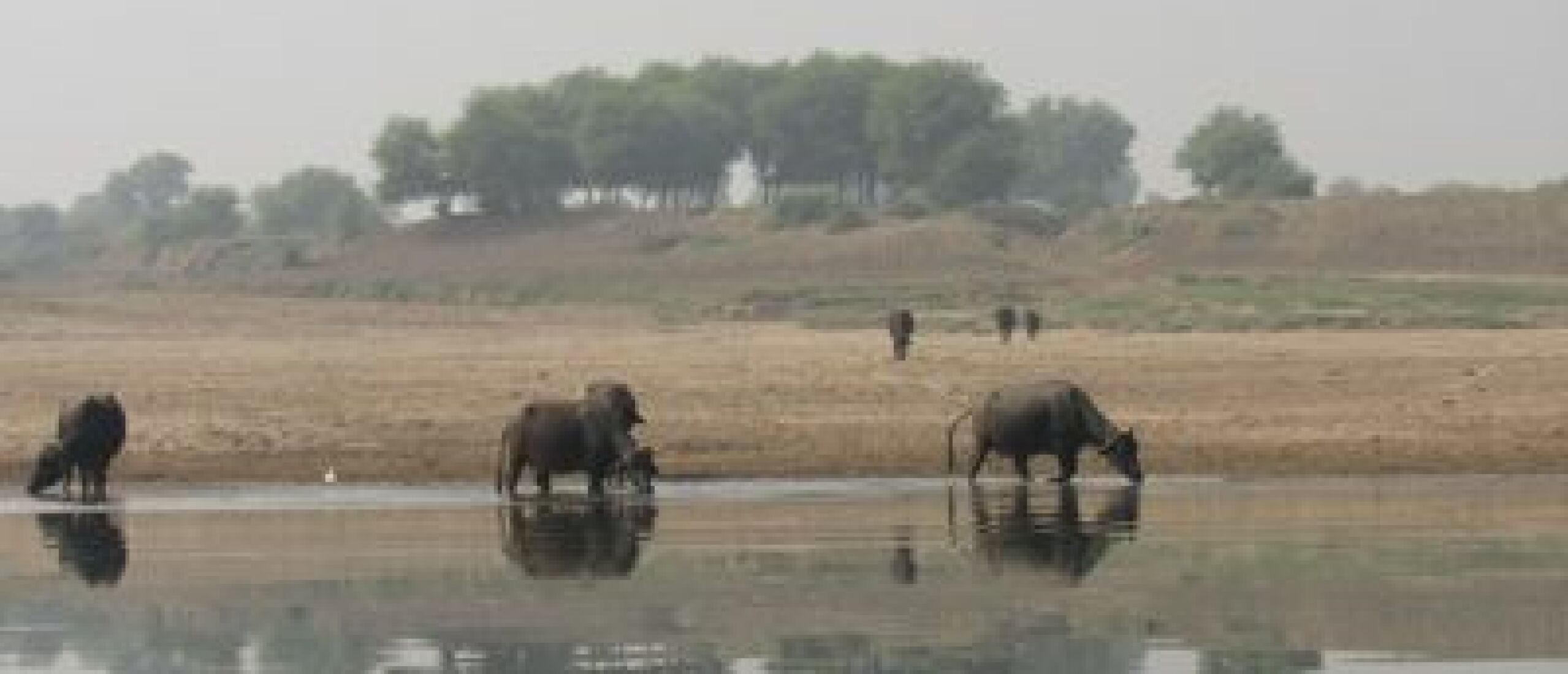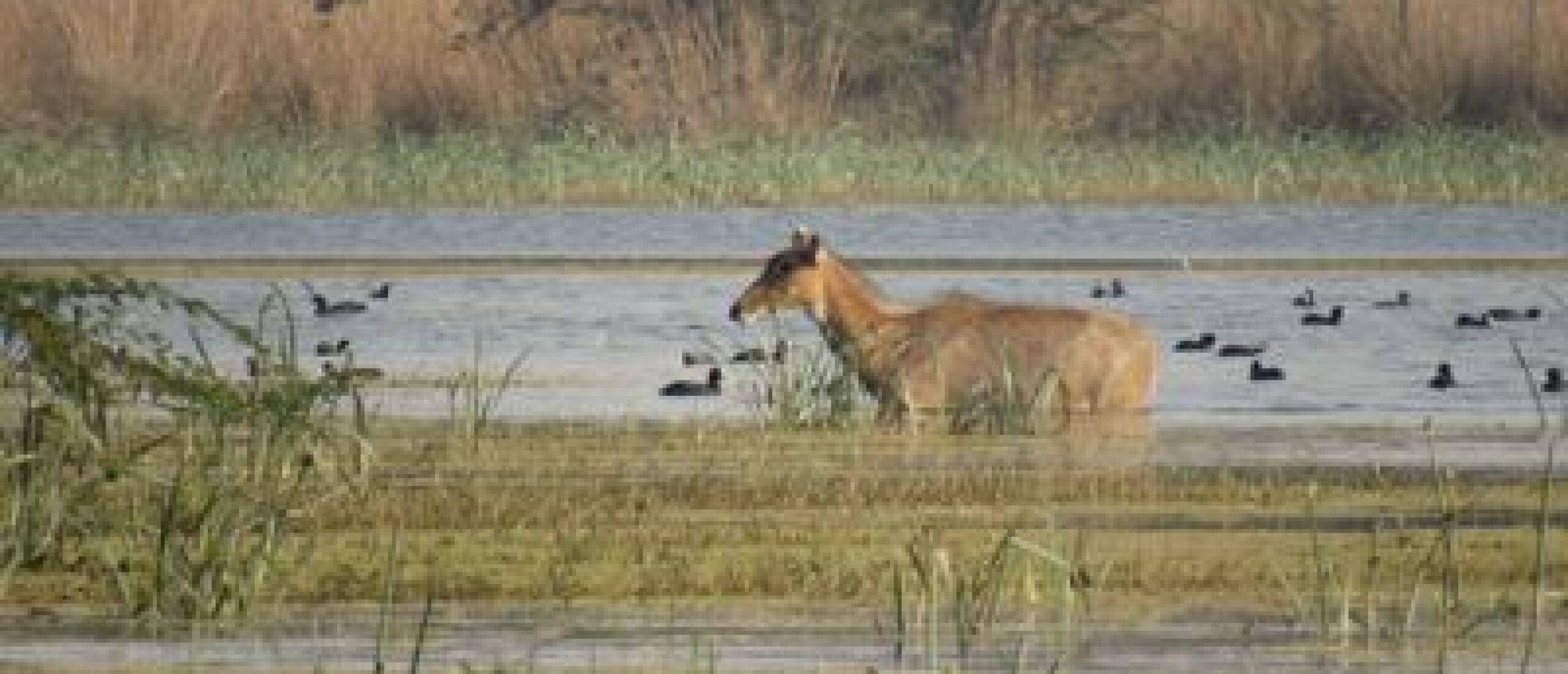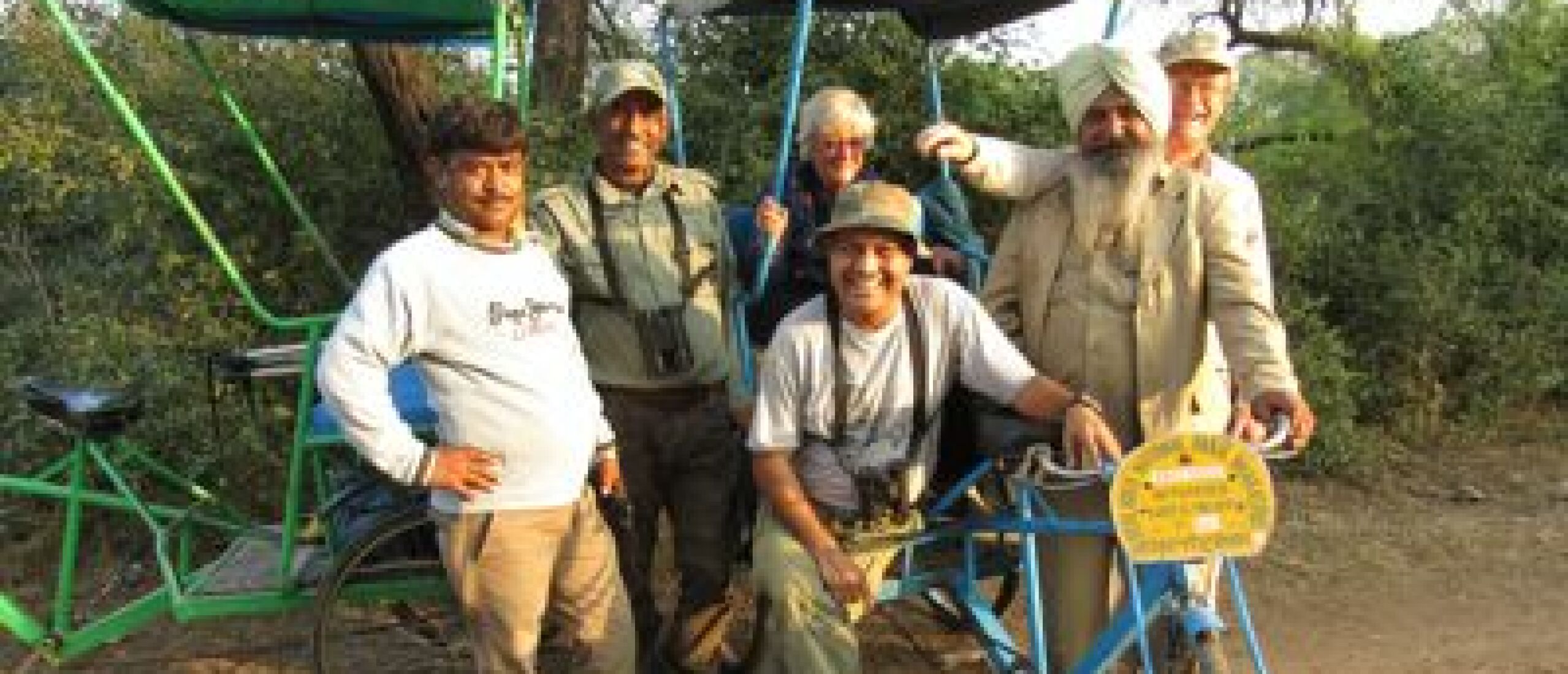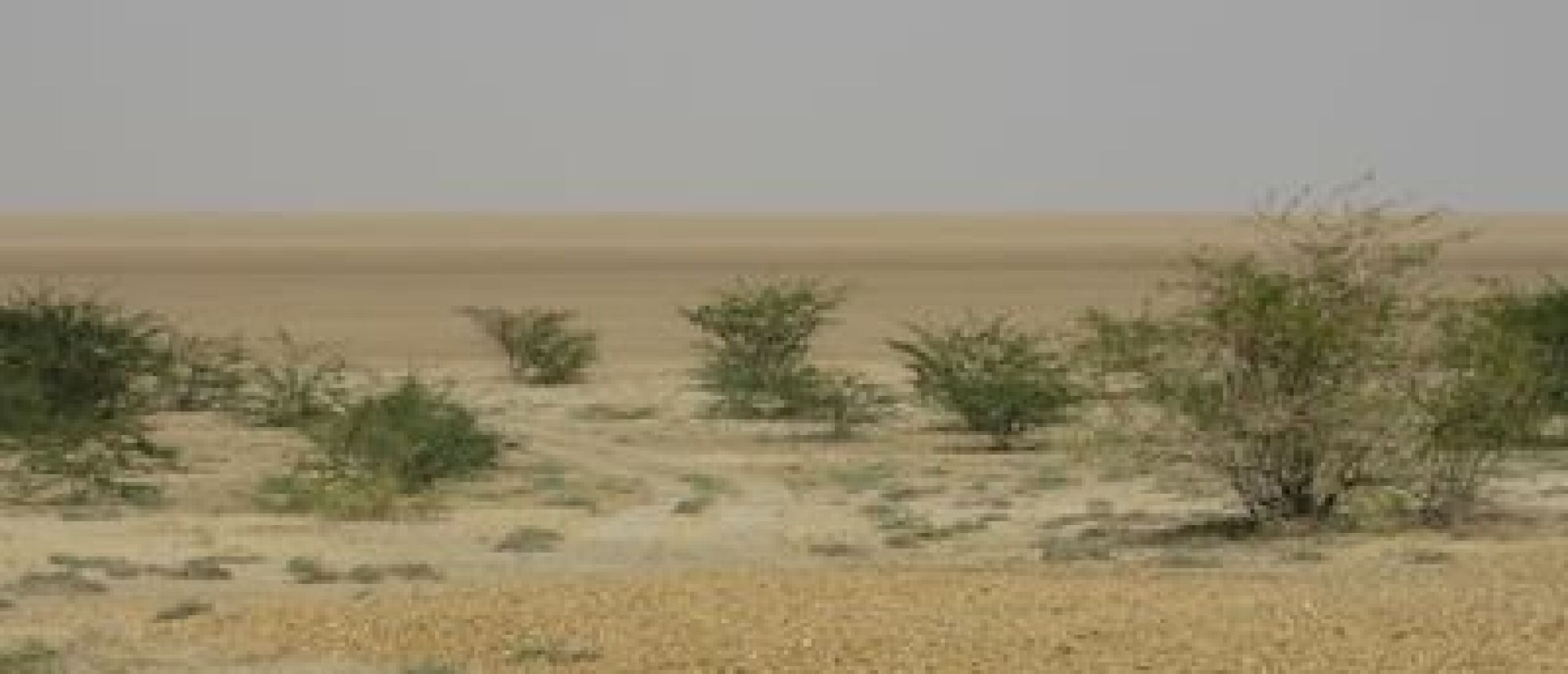
A driverless drive on the Little Rann of Kutch! Following our highly successful (but Crab Plover-less) time in the Great Rann of Kutch, during which we had connected with virtually all of my target species and established an excellent rapport with our hosts Jugal Tiwari and Veer, our tireless driver Bhawani Singh transported us safely and comfortably to the other great flat former seabed area in Gujarat, the Little Rann of Kutch. First impressions of the Little Rann area were far from favourable, the villages being strewn with rubbish and desperately poor people living in makeshift encampments along the roadsides. Even the entrance road to our home for the coming few days was lined with discarded plastic...but once we were in our encampment, Desert Coursers, the warm welcome we received from our hosts Dhanraj and Sylvie set our minds a little more at ease. Desert Coursers is the longest-running of the accommodation facilities close to the Little Rann, and Rosemary and I found ourselves in small round mud-walled cottages with thatched roofs and attached bathrooms. Meals were taken in a charming open restaurant area, and the whole campus was shaded with trees, giving a pleasant, relaxed impression. Our first excursion took us to the nearby Nawa Talab lake, which was covered with flamingoes of both species, both Dalmatian and Great White Pelicans, herons and egrets of several species, Avocets, duck of numerous varieties, with two Imperial Eagles eyeing this potential feast from nearby treetops.
 Flamingoes and Pelicans were just a few of the countless birds on the Nawa Talab lake
Flamingoes and Pelicans were just a few of the countless birds on the Nawa Talab lake
 Common Cranes are a wonderful feature of the Little Rann
Common Cranes are a wonderful feature of the Little Rann
 Pelicans resting on a sandbank in the Nawa Talab
Pelicans resting on a sandbank in the Nawa Talab
Most interesting of all to me were the two delightful Red-necked Falcons that put on a splendid show, perching on telegraph poles and flying on with a dashing flight as we approached. I had seen this scarce species before, but it was a pleasure to reacquaint myself with it here. Other birds on the open grasslands included both Desert and Isabelline Wheatears, Short-toed and Crested Larks, Greylag Geese, and most impressive of all, numerous Common Cranes, whose bugling cries could be heard wherever we went.
 Isabelline Wheatears have a characteristic upright posture
Isabelline Wheatears have a characteristic upright posture
 Red-necked Falcons perched on a telegraph pole near Nawa Talab
Red-necked Falcons perched on a telegraph pole near Nawa Talab
But it was the extraordinary open areas of dried out salty mud that really made this desolate place so impressive and unusual. Stretching over nearly 5,000 square kilometres, this formerly flooded area now dries out completely during the dry season, although apparently it becomes a sea again during wet monsoon years, when it hosts virtually all of India's breeding Lesser Flamingoes. Perhaps the most famous inhabitant of the Little Rann is the Asiatic Wild Ass, a species that has increased from a low of 362 individuals in 1960 to around 5,000 today. We were treated to several sightings of this attractive animal, and it was cheering to hear of a conservation success story when one normally only hears bad news.
 An Asiatic Wild Ass with a Common Crane behind
An Asiatic Wild Ass with a Common Crane behind
 The Asiatic Wild Ass is thriving these days on the Little Rann of Kutch
The Asiatic Wild Ass is thriving these days on the Little Rann of Kutch
That evening, we ventured along the northern edge of the Rann, managing to see four MacQueen's Bustards to add to the one we had been lucky enough to spot on the Naliya grasslands a few days earlier, and after dark we spotted several more Sykes's Nightjars.
 A Sykes's Nightjar on the Little Rann of Kutch
A Sykes's Nightjar on the Little Rann of Kutch
On our second day, we were invited by our host to join him on what was to be perhaps one of the most extraordinary driving experiences I have ever had. He had asked me to provide a list of the bird species I most wanted to see in the area, and high on that list was the Greater Hoopoe Lark (I do not know why the Greater is necessary as there is no Lesser Hoopoe Lark - another of those inexplicable bird names like Common Hoopoe; there is only one Hoopoe!). This species, which is distributed from the Cape Verde Islands, right across the desert regions of North Africa and the Middle East and Pakistan, just reaches India here in the Little Rann. I had only ever had one opportunity to see it, in Morocco, but I did not really venture far enough into the Sahara there and therefore missed it, so it was high on my wish list. When I had mentioned this, Dhanraj's eyes had twinkled and he proposed that we should head out on an all-day expedition to search for it. Unlike most other larks, the Hoopoe Lark has a long, down-curved bill, and it inhabits the most desolate, arid areas of the Little Rann, occurring usually alone or in pairs, and its sandy plumage makes it hard to see against the sandy colour of its desert habitat. When approached, it usually runs away, but when it does fly, its wings are boldly patterned with black and white, rather like a Hoopoe, perhaps explaining its name (although the down-curved bill may also have contributed to that). And so, early the next morning, Rosemary, Yogi and Bhawani climbed onto the back of Dhanraj's Mahendra Bolero vehicle, myself joining him in the cab. The first part of our journey was on metalled roads, but shortly afterwards we found ourselves heading out onto the dried-up flats, eventually losing sight of any features in the surrounding landscape at all. I was amazed to be in a place where I was completely surrounded for as far as the eye could see, in all directions, by a totally flat and entirely featureless landscape. I had never seen anything similar anywhere else.
 A Wild Ass breaks the monotony of the total flatness of the Little Rann
A Wild Ass breaks the monotony of the total flatness of the Little Rann
 The featureless landscape seemed to stretch on forever
The featureless landscape seemed to stretch on forever
So impressed was I that I decided to make a video of this extraordinary landscape as we drove. Suddenly, Dhanraj said, "Shall I make your film a bit more interesting, James?" Thinking he was suggesting doing some wild skidding movements and handbrake turns (not my scene at all), I said I didn't think that would be necessary as driving across the totally featureless landscape with no landmarks around us would be unusual enough, but then to my total astonishment, he said, "I think I'll just go and have a chat with Rosemary", and he climbed out of the window of the vehicle, leaving me alone in the cab, seated in the passenger seat, with the driver's seat vacant and the car powering on across the open desert! I was so taken aback that I did not really know what to think at all! Eventually, the car began to slow slightly, and Dhanraj shouted down to me, "Put your foot on the gas!" Well, that was none too easy from the passenger seat, and so I climbed over into the driver's seat and took the controls. It was indeed an extraordinary feeling to know that I could drive in any direction I liked, and nothing would hinder me until I reached the edge of the Rann. It gave an unusual sense of liberty and unfettered freedom. I was rather disappointed when Dhanraj eventually descended and retook control of his own vehicle! One of the disconcerting things about driving in a featureless landscape is that one loses all sense of how far one has driven. I was astonished when Dhanraj pointed out on the milometer that we had covered nearly 100 kms! By now we were nearing a raised 'island' of rock, with a sparse covering of trees, and it was here that we were to commence seriously searching for the Hoopoe Lark. Dhanraj had seen two here a few days previously, and we drove slowly across the dusty landscape close to the 'island', but there seemed to be no sign of the Lark...or any other birds at all.
 The utterly empty landscape of the middle of the Little Rann
The utterly empty landscape of the middle of the Little Rann
Rather as with the Crab Plover, I love this kind of quest for a rare bird, and we searched and searched, eventually almost giving up...until suddenly a slight movement on the ground ahead of us turned out to be our quarry, a Greater Hoopoe Lark running at top speed, heading rapidly away to our right. I desperately tried to get both telescope and camera ready, but I was only able to snap two unsatisfactory, blurry images before it was out of range, and a further search from the vehicle (this time with driver) failed to reconnect with it.
 A poor shot of the Greater Hoopoe Lark as it ran past
A poor shot of the Greater Hoopoe Lark as it ran past
 The Hoopoe Lark was not keen to be photographed
The Hoopoe Lark was not keen to be photographed
One of the reasons why I find this kind of search for rare species of bird so thrilling, obsessional though it is, is because of what it leads to. If I had not been so keen to see the Greater Hoopoe Lark, which is restricted to such inaccessible and distant localities, we would never have experienced that extraordinary 200 km drive across the remotest parts of the Little Rann of Kutch. We would of course have visited the parts closer to civilisation in order to see the Wild Ass, but we would not have gained such an impression of the vastness of that empty landscape...and we would not have experienced a journey in a driverless vehicle!
 The 'island' in a dry sea close to which the Hoopoe Lark was found
The 'island' in a dry sea close to which the Hoopoe Lark was found
 Yogi and Bhawani on the desert island in the dried out sea
Yogi and Bhawani on the desert island in the dried out sea
 Rosemary recounting her life story to Dhanraj, not realising that he had fallen asleep
Rosemary recounting her life story to Dhanraj, not realising that he had fallen asleep
Another safari brought us into an area that was known by our driver of that day to hold a daytime roost of Short-eared Owls. He drove us around, seemingly aimlessly weaving between the acacia trees, until eventually Yogi and I had become tired and we asked him to call off the search. "Just ten more minutes!", came the driver's reply, and sure enough, to my total surprise, a few minutes later we were gazing at a splendid Short-eared Owl that was sheltering from the sun under a tree. We were able to admire him for quite a while before he flew a short distance and then landed again, affording us even better views.
 A Short-eared Owl was found roosting in the shade of an Acacia tree
A Short-eared Owl was found roosting in the shade of an Acacia tree
 The Short-eared Owl flew a short distance and then landed, giving excellent views
The Short-eared Owl flew a short distance and then landed, giving excellent views
Short-eared was not the only owl we connected with on the Little Rann. Dhanraj had tested my bird knowledge on the very first day by showing me a photograph of a particular species of Scops Owl that he told me he was keen to show me. To my shame, I must confess I was unable to identify it, and it turned out to be a species that was not even on my wanted list, so unlikely did I consider it that we would see one, the Pallid (or Bruce's) Scops Owl. One or two of these scarce birds, which range from the Middle East to Central Asia, had been wintering in trees around the encampment, and Dhanraj set his staff to work to seek them out, and it was not long before one was located, concealed deep within a cactus-like bush. How it had wriggled in there was hard to imagine, and photography was impossible in such a dark place, but a few days later another was found in a tree behind one of the cottages. This again was hard to photograph due to the intervening branches, but I was pleased to be able to obtain one poor record shot anyway.
 The Pallid Scops Owl was almost impossible to photograph
The Pallid Scops Owl was almost impossible to photograph
I shall end this blog post on the positive note brought by the sightings of the Greater Hoopoe Lark and the Short-eared and Pallid Scops Owls. This will be the last post from India as Rosemary and I are due to fly out of Delhi at 04.30 tomorrow morning, but I shall continue with the saga over the coming days until I have completed the entire story of our Great Indian Adventure of 2015. And quite an Adventure it has been!
 The adventurous Rosemary Fox, thriving at 85 in the Little Rann of Kutch
The adventurous Rosemary Fox, thriving at 85 in the Little Rann of Kutch



